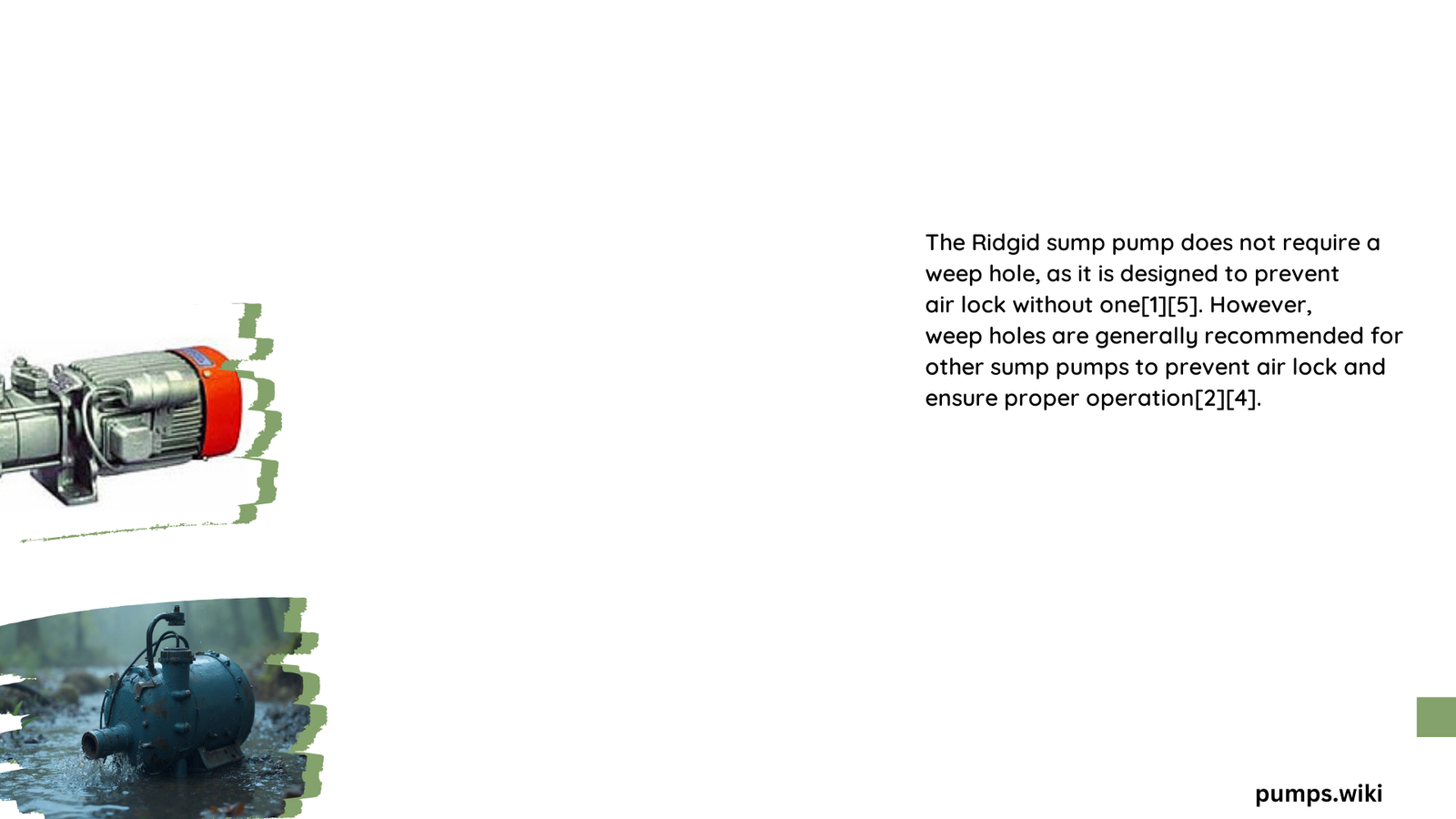Ridgid sump pumps represent a critical component in basement water management, with weep hole installation being a nuanced topic that varies by model and design. Homeowners often struggle to understand whether their specific Ridgid sump pump requires a weep hole, leading to potential performance issues and inefficient water drainage. This comprehensive guide will demystify the weep hole requirements, providing clear, actionable insights for proper sump pump maintenance and installation.
What Is a Weep Hole in Sump Pump Systems?
A weep hole is a small strategically placed opening in the discharge pipe that allows air to escape, preventing potential air lock situations that could compromise pump performance. For Ridgid sump pumps, the necessity of a weep hole depends on specific model characteristics and design innovations.
Key Characteristics of Weep Holes
| Characteristic | Typical Specification |
|---|---|
| Hole Diameter | 1/8″ to 3/16″ |
| Drilling Angle | 45 degrees upward |
| Recommended Location | 6-12 inches above pump |
Do Modern Ridgid Sump Pumps Require Weep Holes?

Newer Ridgid sump pump models have been engineered to minimize or eliminate the traditional need for weep holes. These advanced designs incorporate:
- Integrated air release mechanisms
- Improved check valve technologies
- Enhanced discharge pipe configurations
Factors Determining Weep Hole Necessity
- Pump Model Age
- Older models: More likely to require weep holes
-
Newer models: Often designed without weep hole requirements
-
Discharge Pipe Configuration
- Vertical installations: Higher likelihood of air lock
- Horizontal installations: Potentially reduced weep hole necessity
How to Determine Weep Hole Requirements for Your Ridgid Sump Pump?
To accurately assess whether your specific Ridgid sump pump needs a weep hole, consider these diagnostic steps:
- Check Manufacturer Documentation
- Review user manual
- Contact Ridgid customer support
-
Verify model-specific recommendations
-
Observe Pump Performance
- Listen for gurgling sounds
- Monitor continuous running without water movement
- Check for inconsistent pumping cycles
Proper Weep Hole Installation Techniques
If your Ridgid sump pump requires a weep hole, follow these precise installation guidelines:
Installation Steps
- Select appropriate drill bit (1/8″ or 3/16″)
- Locate optimal drilling position
- Drill at 45-degree upward angle
- Ensure hole is below check valve
- Test pump functionality post-installation
Common Mistakes to Avoid
- Drilling hole too high or low
- Using incorrect drill bit size
- Neglecting angle specifications
- Ignoring manufacturer recommendations
When to Seek Professional Help
Consider professional consultation if:
– You’re uncertain about weep hole requirements
– Your pump exhibits persistent performance issues
– Complex discharge pipe configurations exist
Maintenance Tips for Optimal Sump Pump Performance
- Regular inspection
- Annual professional evaluation
- Monitor discharge pipe condition
- Keep sump pit clean
Conclusion
Understanding weep hole requirements for Ridgid sump pumps involves careful consideration of model specifics, installation environment, and manufacturer guidelines. While newer models often eliminate traditional weep hole needs, homeowners should remain vigilant about pump performance and seek expert advice when uncertain.
References:
– The Real Seal LLC Sump Pump Guide
– Sump Pumps Direct Installation Tips
– Plumbing Forums Sump Pump Discussions
